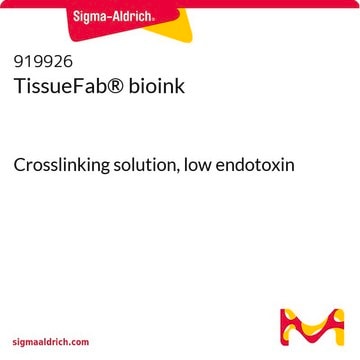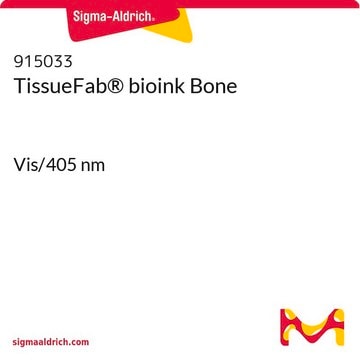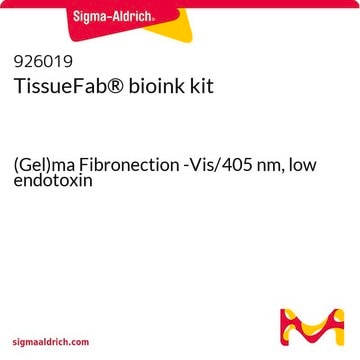Yes, any of GelMA based bioinks, such as 918741, can be used for DLP 3D printing, but some adjustments are needed. The DLP printer should have a heating function, or the bioink needs to be heated before printing to make the GelMA a low viscosity liquid. Additionally, a photo-absorber needs to be added to the bioink to scavenge scattered light.
推荐产品
质量水平
描述
suitable for 3D bioprinting applications
with LAP photoinitiator
无菌性
sterile-filtered
表单
viscous liquid
杂质
≤5 CFU/g Bioburden (Fungal)
≤5 CFU/g Bioburden (Total Aerobic)
<50 EU/mL Endotoxin
颜色
colorless to pale yellow
粒径
0.2 μm
pH值(酸碱度)
6.5-7.5
应用
3D bioprinting
储存温度
2-8°C
正在寻找类似产品? 访问 产品对比指南
应用
Gelatin methacryloyl (GelMA) is a polymerizable hydrogel material derived from natural extracellular matrix (ECM) components. Due to its low cost, abundance, and retention of natural cell binding motifs, gelatin has become a highly sought material for tissue engineering applications. The addition of photocrosslinkable methacrylamide functional groups in GelMA allows the synthesis of biocompatible, biodegradable, and non-immunogenic hydrogels that are stable in biologically relevant conditions and promote cell adhesion, spreading, and proliferation.
法律信息
储存分类代码
10 - Combustible liquids
WGK
WGK 3
商品
生物墨水可3D生物打印形成功能组织结构,从而应用于药物筛选、疾病建模和体外移植。针对特定组织工程应用选择生物墨水和打印方法。
Bioinks enable 3D bioprinting of tissue constructs for drug screening and transplantation; select suitable bioinks for specific tissue engineering.
Learn how 3D bioprinting is revolutionizing drug discovery with highly-controllable cell co-culture, printable biomaterials, and its potential to simulate tissues and organs. This review paper also compares 3D bioprinting to other advanced biomimetic techniques such as organoids and organ chips.
-
Are there any GelMA products suitable for DLP 3D printing, particularly those that are part of the TissueFab line?
1 answer-
Helpful?
-
Active Filters
我们的科学家团队拥有各种研究领域经验,包括生命科学、材料科学、化学合成、色谱、分析及许多其他领域.
联系客户支持








